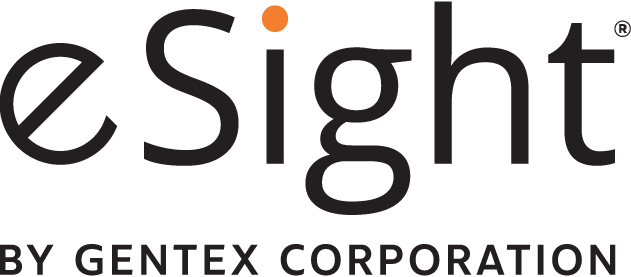CNIB Foundation’s Stephen Ricci, shares his vision for the future of accessibility and technology
Stephen Ricci works for CNIB Foundation as the portfolio manager of technology and accessibility solutions. Known for his positive attitude, he often tells clients “don’t let your disability prevent you from full-filling your dreams.” Stephen understands the challenges and available solutions for people living with visual impairments, as he too is partially sighted due to ocular albinism.
In our latest “5 Questions With,” Stephen shares what it’s like to be a self described “in-betweener” (not fully sighted or profoundly blind), and where he thinks the future of accessibility and inclusive technology is heading.

Stephen Ricci, Portfolio Manager of Technology and Accessibility Solutions for CNIB Foundation.
What’s a common misconception about low vision you’d like to mispel?
I don’t really know of too many misconceptions that come with being partially sighted, other than I think of us sometimes as “inbetweeners.” We don’t really fit into the sighted community, and we don’t really fit into the blind community. Therefore a lot of times we can be invisible and fall through the cracks if we don’t advocate for ourselves.
What are some common struggles your clients deal with regularly?
The biggest struggle for people that are partially sighted is gaining employment, and having access to resources and accessible products that are sometimes out of budget. Facial recognition is another big one.
How did you learn about eSight?
I learned about eSight Eyewear through my low vision optometrist Dr. Ana Juricic. She asked me to come to her office to look at a new and exciting product. I met with eSight directly and had a demonstration of the first prototype. I even signed a nondisclosure agreement, and became an eSight beta tester! I felt that this was a very forward thinking revolutionary product and I wanted to help the creators make sure they were getting it right.
What are some common technologies, both low and high tech, you are exploring with your clients?
I have been selling solutions for Canadians that are blind, partially sighted and deaf-blind since 2004. There are many products that are game changers depending on the needs of the individual in their daily life. Whether they are at work, at school, at home, or at play.
When it comes to magnification, there are many subcategories. This can include a magnifying glass to many different styles of electronic video magnifiers also referred to as CCTV’s. Even CCTVs have many subcategories including handheld and portable desktop. Of course there are wearable devices like eSight Eyewear. Each one of these technologies has different pros and cons and the best solution really depends upon individual situations and needs.
Where do you think the future of accessibility and inclusive technology is heading?
I’ve been joking for years that as technology evolves and includes universal design and accessibility for all, it will eventually put me out of a job. My hope is that all products will become accessible out of the box and we won’t have the need for accessibility products. I think laws like AODA and the Canadian Disability Act are pushing things forward.
Our community is changing as well. Particular in the aging community where they are experiencing un-expected age-related vision loss due to macular degeneration, glaucoma, diabetic retinopathy. That generation hadn’t planned for a future with visual impairments. Now we’re seeing that as baby boomers grow older, they are a generation that has embraced technology and have saved more with RSPs. So there’s more of an acceptance of technology in their lives and a bigger demand for it.
Do you think our current situation with the pandemic will change accessibility processes and technologies, for better or for worse?
Every year technology and remote accessibility gets even better. Now, people of low vision who might have had concerns with transportation can now have virtual doctor appointments, remote learning and meetings. As we’re being forced into it (as a society) the technology will get better. It’s already changed so much in just one month. We’ve been using Zoom as an accessible platform for meetings and get-togethers. I hope that there are more remote options with the pandemic.
I hope that we see voting as the next challenge to be tackled. We’ve been advocating for remote voting, but now it might have to become a reality for everyone. A lack of accessible voting has reduced the number of people with disabilities in participating in elections in the past. Imagine how that could change politics?
Did you find this article helpful? Keep reading 5 Questions with Assistive Technologist, Luke Scriven.
